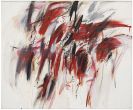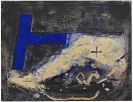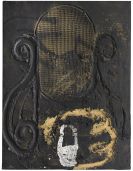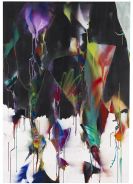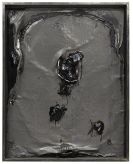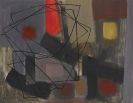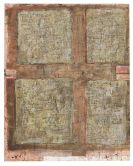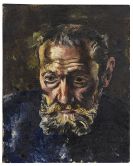
Peter Brüning
Düsseldorf
1929 -
Ratingen
1970
Peter Brüning grew up in an art-oriented family and began his artistic work at an early age. From 1950 Brüning studied at the Stuttgart 'Akademie der Bildenden Künste', where he initially followed the style of his teacher Willi Baumeister and his role-models Fernand Léger and Pablo Picasso. His studies of Expressionism and Cubism lead Brüning to find his own style within his varied early work, in which drawing played a special role. A two year sojourn in Soisy-sur-Seine enabled Brüning to take long trips through France and to remain in direct contact with the art metropolis. In 1953 Brüning joined with Gerhard Hoehme and Winfred Gaul to form the group 'Künstlergruppe Niederrhein', which was later also joined by Bernard Schulze and K. O. Götz. Only one year later the group changed its name to 'Gruppe 53'. Under the influence of the French Informel painting, Brüning became one of the most successful exponents of 1950s German Art informel. Whereas Brüning's paintings were initially dominated by dark colors and a close painting style, it lightened under the influence of his friend Cy Twombly and became more gestic, freehanded and dynamic. In 1964 Brüning developed a new type of landscape painting, the so-called 'Verkehrslandschaft'. Cartographic signs like contour lines, traffic junctions and pictograms were playfully combined in color-intensive compositions which reflect the desire for a harmonious integration of nature and technology. From 1966 Brünig produced plastic objects and spatial arrangements including his most famous work, the motorway memorial in Ehrenberg from 1968. Brüning's specific vocabulary of form not only determined his paintings and sculptures but also his extensive late drawings and prints. One year before he died in 1970, Brüning was appointed professor of free painting at the 'Staatliche Kunstakademie' in Düsseldorf. Brüning is one of the most successful artists of the art scene, who achieved international acclaim during his lifetime, receiving numerous awards and exhibitions at home and abroad, including participations at the 1959, 1964 and 1968 documenta.
Would you like to sell a work by Peter Brüning?
Infos for seller
